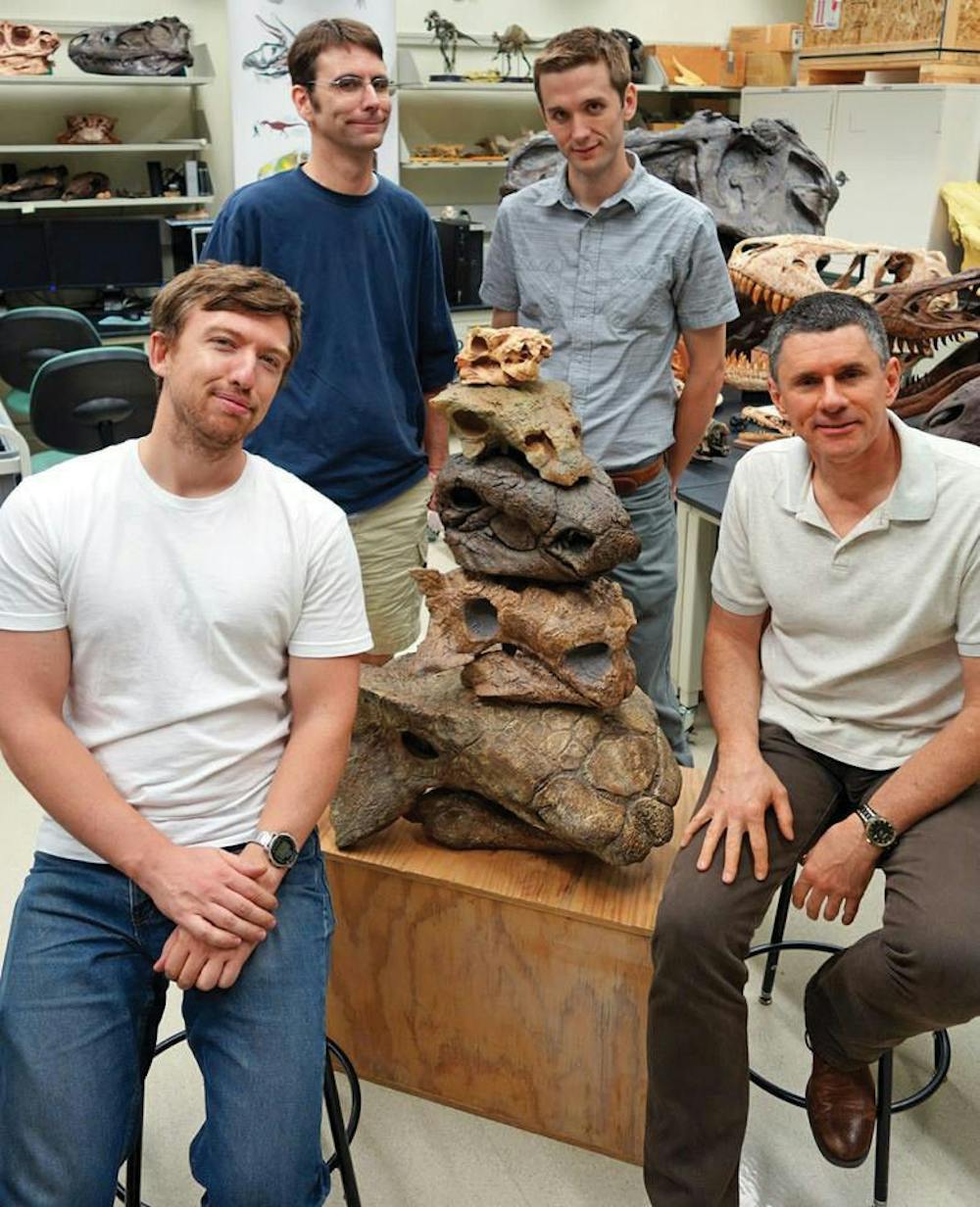Researchers use advanced technology to see how dinosaurs breathed
Ever wondered how dinosaurs breathed? Several Ohio University researchers have used computers to simulate air flowing through the nose of a creature that has been extinct for millions of years.
Jason Bourke, a doctoral student at OU, was the lead author of a study in a team of seven scientists of how the small dinosaur called the Stegoceras smelled and cooled its brain. The scientists included OU students and a faculty member.
“We look at the bones of dinosaurs, but we try to see what they are telling us about the biology,” said Lawrence Witmer, an OU Heritage College of Osteopathic Medicine professor of biomedical sciences. “To do that, we need to reconstruct a lot of the things that time has stripped away (from the noses) — soft tissues, blood vessels, nerves, brains, etc. — and we try to reconstruct that.”
For that reconstruction, Bourke uses a type of engineering technology, called computational fluid dynamics, to replicate how fluids and air traveled through different parts of the dinosaurs’ noses to give him an idea of what tissue used to be there but wore away from the nose over time.
He is the first person to use this process to study airflow, Witmer said.
“We did that with a mix of different 3D software, some let you make 3D models from CT scans,” he said. “We also used this 3D modeling software called Maya, which is the stuff that makes certain things in Shrek and Star Wars. We use that to squish and pinch things into place.”
Using the software, Bourke and the rest of the team looked at the structures in living animals such as birds and lizards to compare their noses to the Stegoceras’ to determine similarities, Bourke said.
“Obviously smelling is the first thing people think of,” Witmer said, “but there’s also a lot more going on in the nose in terms of the vital functions, particularly heat exchange, which is warming things up or cooling things down.”
Blood flow is another important aspect of the function of the nose because it tells how well the dinosaur can heat itself, he said.
“That’s one of the links between Jason and I — he’s studying airflow, and I’m looking at the anatomy and blood flow around the nose,” said Ruger Porter, a doctoral student and co-author on the project. “Where he can show how air flow patterns occur, I can show where there are blood vessels. He can tell me where air is flowing, and we can look at this pattern that might show where there is heat exchange in the nose.”
The two are continuing this research by transitioning away from the smaller-sized Stegoceras and on to bigger things.
“(The Stegoceras) set the precedent for a small dinosaur,” Porter said. “Now we’re starting to look at larger dinosaurs right now and how heat can be exchanged.”
All of the research in this project and about different parts of the dinosaurs fall under Witmer’s Visible Interactive Dinosaur project that is funded by the National Science Foundation with the goal of increasing general scientific knowledge, he said.
“It makes science less scary and more compelling,” Witmer said.
The interactive project uses YouTube videos and Facebook to try and draw attention to scientific findings while still keeping the information at a level most people easily understand, Witmer said.
“The project itself is funded by the (National Science Foundation) through a multi-hundred-thousand-dollar grant,” Witmer said. “Jason has also gotten separate funding from OU, the (National Science Foundation) and the Jurassic Foundation, but I provide most of the infrastructure (funding).”
Overall, Bourke said he found the process and discovery to be a success.
“In paleontology, people often make these grand overarching interpretations with only a little bit of data, and I didn’t want to do that,” he said. “It might not be as sexy, but it’s more grounded, and I think it turned out well.”
@kcoward02
kc769413@ohio.edu






